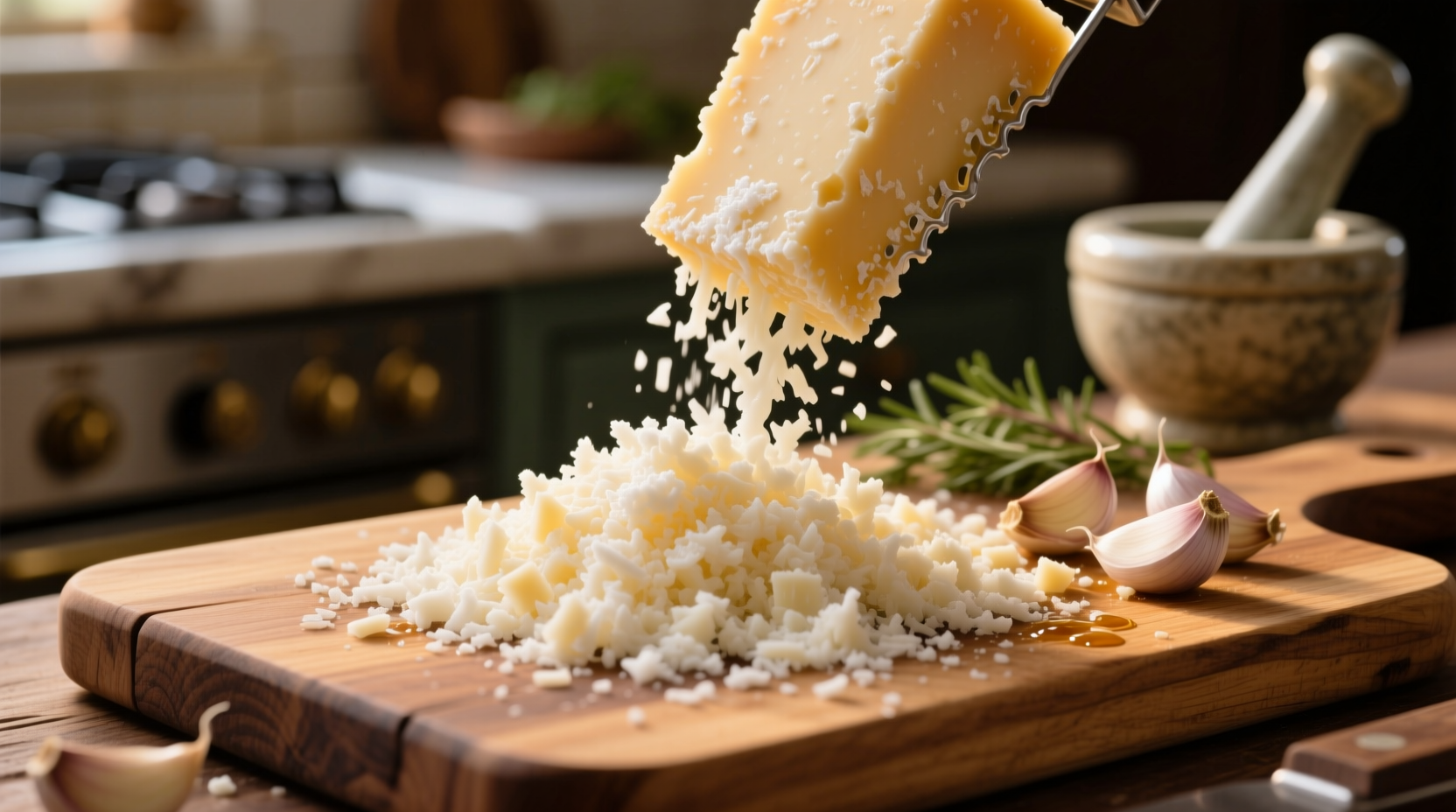Why Garlic Parm Works: The Science Behind the Magic
Understanding why garlic and Parmesan form such a powerful partnership begins with food chemistry. Parmesan cheese contains high levels of glutamates that trigger umami receptors, while garlic's allicin compounds provide aromatic complexity. When combined, these elements create flavor layering that surpasses either ingredient alone. Professional chefs leverage this synergy through specific preparation techniques that maximize flavor extraction without bitterness.
Creating Perfect Garlic Parm: Three Proven Methods
Not all garlic parm preparations deliver equal results. The method you choose significantly impacts flavor development and shelf stability. Here's how to approach each technique with professional precision:
Dry Rub Method for Maximum Versatility
For crusts, seasoning meats, or finishing dishes, a dry garlic parm blend offers convenience and intense flavor. Combine 1 cup freshly grated Parmesan (avoid pre-grated varieties with anti-caking agents), 2 tablespoons garlic powder, 1 teaspoon onion powder, and ½ teaspoon black pepper. The key to exceptional results lies in using Parmesan aged at least 24 months for concentrated flavor. Store in an airtight container for up to 3 weeks.
Fresh Paste Technique for Immediate Impact
When you need vibrant, restaurant-quality flavor in minutes, create a fresh garlic parm paste. Mince 3 garlic cloves finely, then combine with ½ cup grated Parmesan, 2 tablespoons olive oil, and 1 teaspoon lemon zest. The lemon zest cuts through richness while enhancing garlic's aromatic compounds. Use immediately for pasta dishes or as a finishing touch on proteins.
Creamy Sauce Foundation for Comfort Food Classics
For Alfredo-style sauces or creamy pasta dishes, build your garlic parm sauce properly. Start with 2 tablespoons butter, sauté 2 minced garlic cloves until fragrant (not browned), then gradually whisk in 1 cup warm cream. Remove from heat before adding 1 cup freshly grated Parmesan in three additions, stirring until smooth. Adding cheese off-heat prevents clumping and maintains silky texture.
| Garlic Parm Variation | Best Applications | Shelf Life | Flavor Intensity |
|---|---|---|---|
| Dry Rub Blend | Meat rubs, roasted vegetables, popcorn seasoning | 3 weeks refrigerated | Moderate (builds when heated) |
| Fresh Paste | Pasta finishing, bread dipping, protein topping | 3 days refrigerated | High (immediate impact) |
| Creamy Sauce | Pasta dishes, chicken preparations, vegetable sauces | 4 days refrigerated | Medium (balanced richness) |
Avoiding Common Garlic Parm Mistakes
Even experienced cooks make critical errors with garlic parm combinations. Understanding these pitfalls prevents disappointing results:
- Using pre-grated Parmesan - Contains cellulose that prevents proper melting and creates grainy texture
- Overheating garlic - Causes bitterness; garlic should be fragrant but never browned
- Adding cheese to boiling liquid - Creates clumping; always remove from heat before adding cheese
- Using low-quality olive oil - Overpowers delicate garlic notes; use mild extra virgin or neutral oil
When Garlic Parm Shines: Perfect Pairing Guide
Certain dishes benefit dramatically from garlic parm enhancement while others suffer. This context boundary analysis helps you apply garlic parm appropriately:
For pasta dishes, garlic parm works exceptionally well with fettuccine, linguine, and penne. The ridges and shapes capture the sauce effectively. However, delicate stuffed pastas like ravioli often pair better with simpler butter and sage preparations that won't overwhelm the filling.
When preparing proteins, garlic parm elevates chicken breasts, pork chops, and white fish beautifully. But avoid using it with strongly flavored proteins like lamb or game meats where the garlic might clash with natural flavors.
Vegetable applications show the most versatility - roasted broccoli, asparagus, and cauliflower all benefit from garlic parm finishing. The natural bitterness of these vegetables balances perfectly with Parmesan's saltiness.
Storage Solutions for Maximum Freshness
Proper storage maintains garlic parm's flavor integrity. Dry rub blends should be kept in airtight containers away from light and moisture. Fresh pastes require immediate refrigeration in glass containers with a thin layer of olive oil on top to prevent oxidation. Creamy sauces separate when frozen, so prepare these fresh or consume within four days.
Understanding the historical development of this classic combination reveals why it remains popular. Garlic cultivation dates back to ancient Egypt, while Parmesan cheese production began in medieval Italy. Their pairing gained prominence during the Renaissance when Italian chefs discovered how aged cheeses complemented garlic's pungency. This culinary timeline explains why the combination feels so natural despite originating centuries apart.

Professional Tips for Home Cooks
Master the professional technique of "blooming" garlic in oil before adding Parmesan. Heat olive oil to 250°F (121°C), add minced garlic, and cook for exactly 45 seconds until fragrant but not colored. This temperature extracts maximum flavor without bitterness. When adding Parmesan to sauces, use the "mounting" technique: remove from heat, then incorporate cheese in three additions with constant stirring for perfect emulsion.











 浙公网安备
33010002000092号
浙公网安备
33010002000092号 浙B2-20120091-4
浙B2-20120091-4